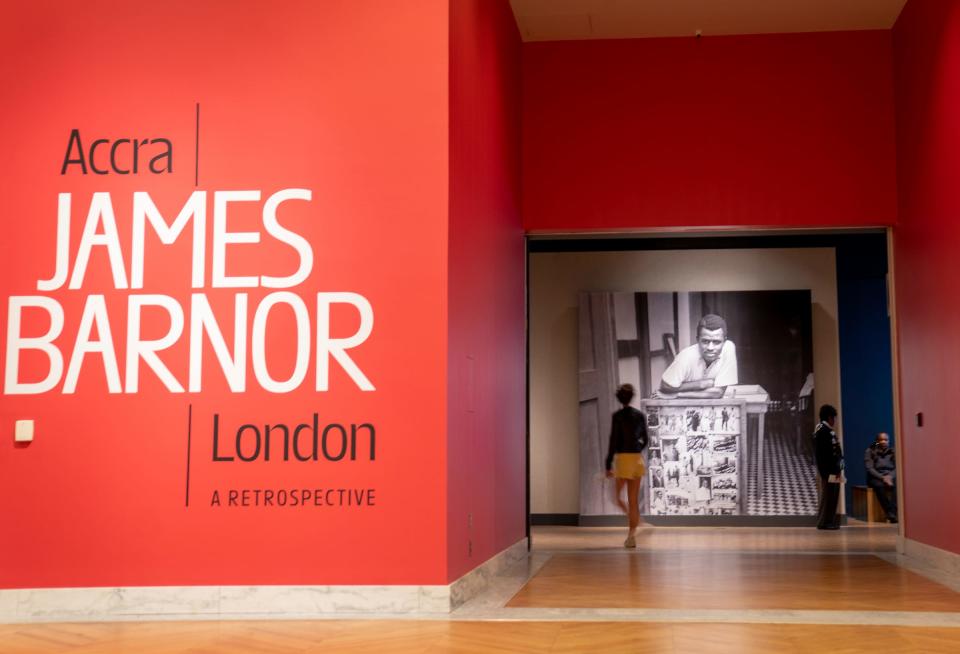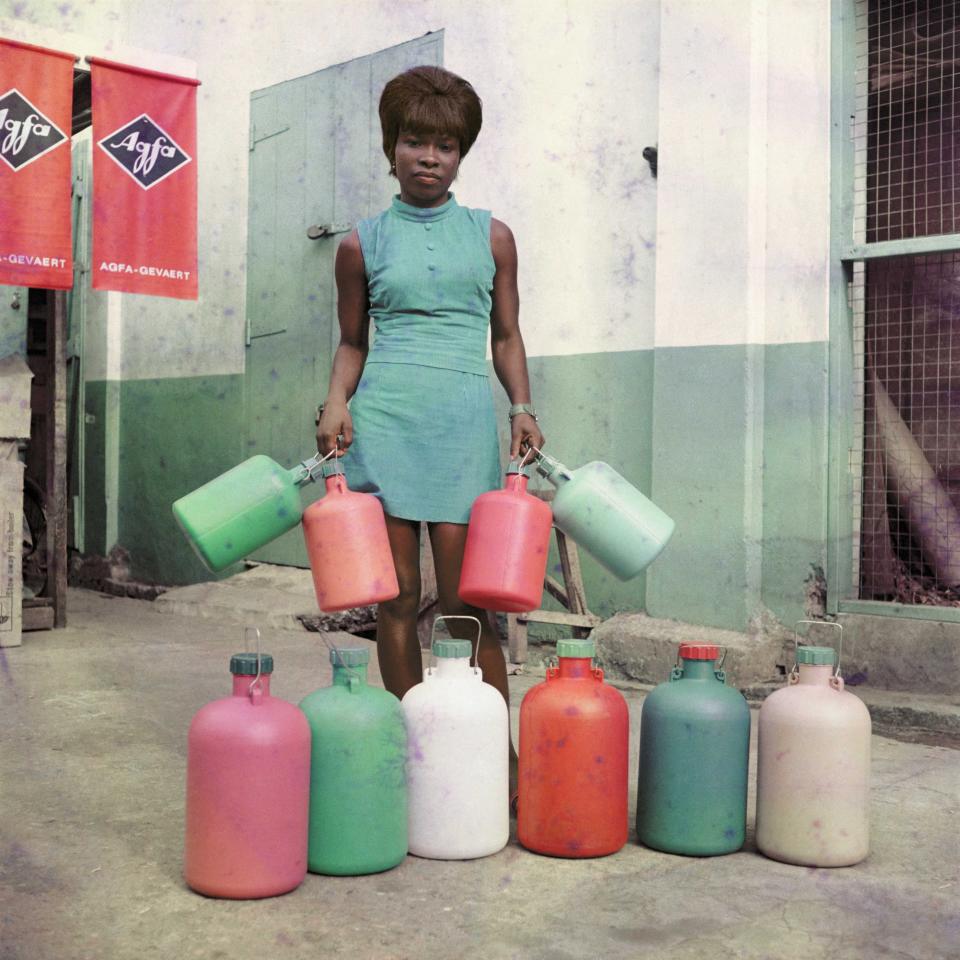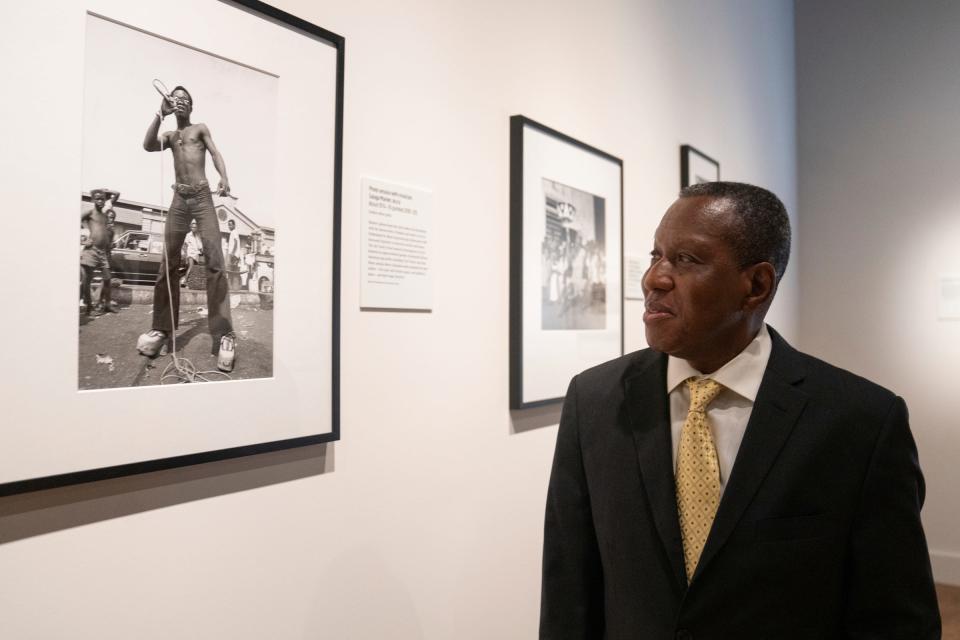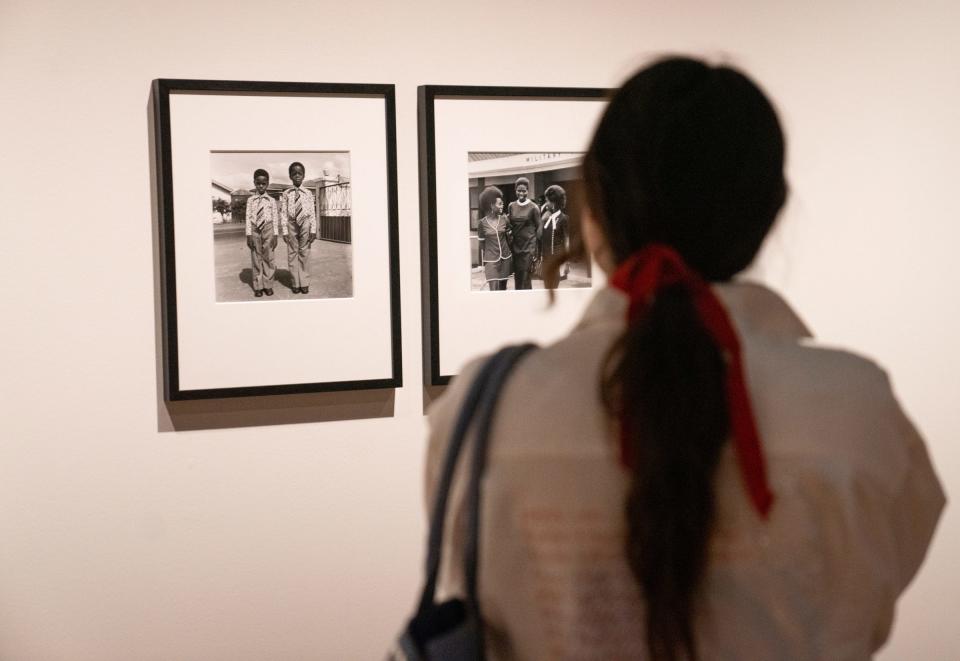Pioneering 94-year-old African photographer celebrated in DIA show
One of this year’s most exciting art exhibitions in metro Detroit is currently on display at the Detroit Institute of Arts — and there’s less than a month left to see it.
The 60-year career of pioneering Ghanaian photographer James Barnor is heralded in the stunning “James Barnor: Accra/London — A Retrospective,” the first U.S. retrospective of his work. More than 170 photos from his archive of more than 32,000 images have been on view at the museum since late April and will remain on the walls of the DIA’s special exhibition section until Oct. 15. Unlike some special exhibitions at the DIA, "Accra/London" is free with standard museum admission, and the museum is always free to residents of Macomb, Oakland and Wayne Counties.

Barnor’s photographs, dating from the 1950s through the 1980s, bring to vivid life the stories of everyday citizens in Ghana, along with the African diaspora in the United Kingdom, during times of major social and political changes.

“I am honored the Detroit Institute of Arts chose to spotlight my work, allowing Detroit audiences to receive an opportunity to discover the important years in African history and culture that the photos represent,” said Barnor, 94. “It is my hope that these images can inspire a new generation of artists.”
Nii Quarcoopome, head of the DIA’s Department of Africa, Oceania and Indigenous Americas, co-curated the show along with Nancy Barr, the DIA Department Head in the Prints, Drawings and Photographs department and the James Pearson Duffy Curator of Photography.
Quarcoopome said the show is especially significant because Barnor is still living.
“Unlike most other African photographers of his generation, he’s still alive with us,” said Quarcoopome. “Most of the others passed away before they were celebrated. James is here, and he has a really terrific memory, which means that he gets to tell his own story. That is what makes this exhibition exceptional. And what is even more important is that he did not only work in Ghana, he also worked in the U.K. So he is the perfect person to bridge the continent of Africa with the African diaspora in Europe.”

Portraits, photojournalism and lifestyle photography take American concepts of African art beyond textiles, sculptures and carvings, showcasing major milestones in modern African history. Barnor had a front-row seat with musicians, fashion models, dignitaries and sports figures during Ghana’s transition from a British colony to an independent nation.
“For me, it’s about changing perceptions of Africa,” Quarcoopome said. “Most things people see on TV about Africa involve abject poverty. This exhibition gives people insights into how Africa was also juggling tradition and modernity like everywhere else in the world. (There are) photographs of African society in the 1950s, fully modernized, globally connected and also having a very strong middle class involving doctors, lawyers and other technocrats who were the ones who led the move towards independence from Great Britain. They weren’t just in the bush or in villages; many lived and worked in the cities.

"I’m hoping that people will walk away from this exhibition — especially members of the African immigrant community and African Americans — realizing that Africa was not backward. Africa has been growing and is still growing. And it’s not ‘catching up’; it’s growing alongside the rest of the globe.”
Contact Free Press arts and culture reporter Duante Beddingfield at dbeddingfield@freepress.com.
This article originally appeared on Detroit Free Press: DIA displays 94-year-old African photographer's 60 years of work

